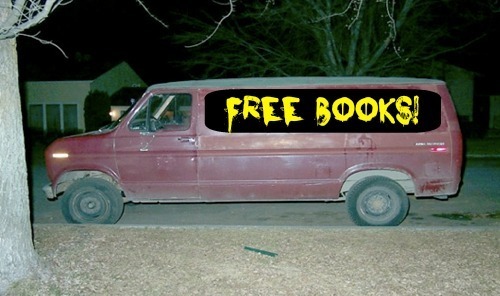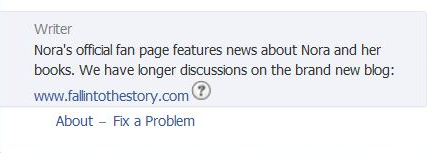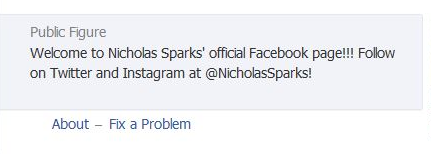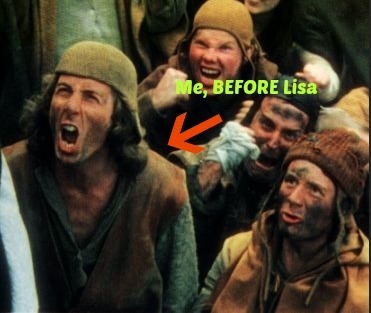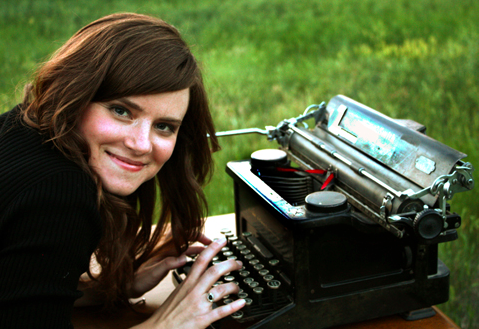Kristen Lamb's Blog, page 72
September 23, 2013
Our Author Brand—The Choice Between Meaningful and Empty, Sad Imitation
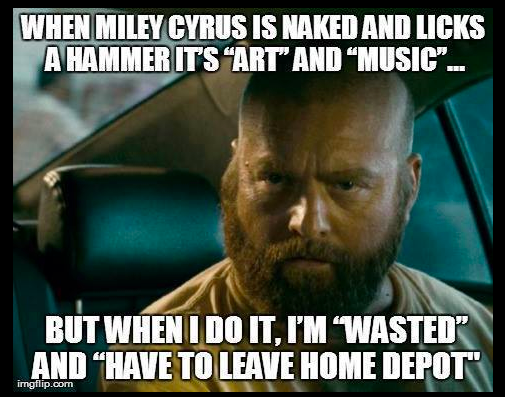
Meme from Facebook via imgflip.com
When I saw this meme on Facebook, I though my husband was going to have to scrape me off the floor I was laughing so hard. And, like most things in life, if I’m left long enough to marinate on something, I frequently discover a hidden truth or a lesson we can all apply to life, our work and our art.
There are a lot of lessons out there about author branding (I’m right, though  ). There are those who hail the genius of automation, or claim we should be outrageous, shocking, and rattle The Establishment (whatever that is). I suppose all paths are viable, though all will yield different results.
). There are those who hail the genius of automation, or claim we should be outrageous, shocking, and rattle The Establishment (whatever that is). I suppose all paths are viable, though all will yield different results.
The Automated Path
There are marketing technophiles who will gladly (and often for a fee) set up our social media to act on its own. We spend an hour writing clever snippets, plug them in and POOF! A machine can tweet, post on Facebook, post about our blog and we can happily do whatever other more important thing we have to do without ever worrying our pretty little heads about social media.
Yet, I would say that, whenever we consider our author brand, we need to also consider whether it is authentic, because in the Digital Age, authenticity is something people are desperately seeking. In the sea of 0s and 1s we long for that human touch and voice that gives information its meaning.
As Jaron Lanier states beautifully in his book You Are Not a Gadget:
A computer (social media) isn’t even there unless a person experiences it. There will be a warm mass of patterned silicon with electricity coursing through it, but the bits don’t mean anything without a cultured person to interpret them.
I’ve often stated that social media (like all forms of communication) is meaningless unless there is another person engaged on the other side to see and then act. Five or even three years ago, we had a hard time spotting people from bots.
Now? We’re far more sophisticated and not easily fooled.
Plant seeds of automation, and we shouldn’t be shocked if all we harvest are bots using the same tools, algorithms and tactics. When we rely on tools and gadgets, we are imitating being human, so why are we expecting to gain anything real in return?
Being Outrageous
Back to the meme above (*still giggles*), there are people who can pull off knocking over apple carts. Shock-and-Awe is, of course, an option. I’m never here to tell anyone what to do, only to help you do what is right for you and your brand and educate you on possible outcomes.
We can rant and rave and shock and push buttons, but I will warn you. There is a cost. Nothing in life is free  . Being shocking or controversial will gain attention, but it’s a gamble. Will it garner enough positive attention to outweigh the bad?
. Being shocking or controversial will gain attention, but it’s a gamble. Will it garner enough positive attention to outweigh the bad?
As artists and writers many of us fall in the INFJ or ENFJ sectors of the Myers-Briggs. What this means is that we process information and interpret our reality through intuition (N) and emotion (F). We have a heightened sense of empathy.
This can be a good thing. It makes for great actors, writers, songwriters, dancers, etc. We are emotional creatures. This said, the sensitivity we feel toward emotion is far higher than, say, someone who is a natural accountant, who is logical and processes their world analytically.
We can say we’ll remain rational, but we also say we’re going to go to the gym five days a week and only have one cookie. Everyone is human, but artists are particularly human. It’s what makes us good at what we do, yet it’s also what makes us vulnerable to negative energy.
Sure, Miley Cyrus took a gamble on her career and she’s laughing all the way to the bank. But there are other stars who made similar wagers and shattered. Time will tell if Miley’s antics will be worth it. Or, will we one day read headlines about the ruined wreckage of a once-lovable Disney star now in jail or in rehab or dead?
Since I’m wagering I’m mainly speaking to writers and not former Disney child stars contemplating dancing nude with leaf-blowers, I’ll stick to author branding. Being outrageous comes with a lot of negative energy, criticism and trolls. If this is a path you want to take, make sure you have the skin to take the heat.
I, personally, am a total wuss and admit this with pride. I think it is possible to be shocking, outrageous and controversial without inviting in mass negativity. Don’t believe me? Just blog about the Star Wars Prequels, LOL. People feel VERY passionately about a made-up universe.
The Authentic Path—Be the Best You, Not an Imitation
I think the meme above is so clever because it shows how, when we try to copy, we can end up looking like fools. It’s one of the reasons I spend so much time in Rise of the Machines having you do exercises to mine the genuine YOU and then showing you how to connect those unique aspects of your personality, loves, likes, dislikes, hobbies, strengths and short-comings to a reading audience and to cultivate a community.
I’ve been told my humor blogs remind people of The Bloggess, my informative posts sound like Seth Godin or even some of my craft teaching is resonant of Larry Brooks (which for me is very humbling because these folks are all fantastic writers). I can honestly say I never copied any of these other writers. In fact, I never heard of ANY of them until commenters made the observations.
Yes, it is a compliment to be compared with other peers. When we get TOO different, too odd, we lose people. Being authentic doesn’t mean we have to be so bizarre we can’t be compared to other writers or artists. It just means being the best us that we can be.
And if that “best you” is licking a red pen suggestively and then, while nude, running your first WIP through an industrial shredder, please make a vlog…or maybe don’t.
For what it’s worth, I don’t think Miley is all that shocking. Hmmm, a former Disney star hits seventeen, starts being seen in bars drinking underage, wears less and less clothing, “accidentally” releases a sex tape, amps up antics to outdo previous Disney child star, etc, etc, etc. It’s gotten to the point it is boringly formulaic.
But that’s my two cents.
What are your thoughts? Are there some artists or writers who’ve won your heart with being outrageous and controversial? How did they do it in a way that didn’t make you run screaming the other way?
Are there some who’ve lost you? Maybe you once loved them and then the controversy spoiled it? Are there some writers who’ve won or lost you through knocking over apple-carts?
No need to name, names, btw.
Are you a wuss, too and not a fan of being troll-fodder? Or, do you have the ability to brush off trolls like dust? Maybe you have some tools or suggestions for the rest of us still growing emotional heat-panels capable of reentering theEarth’s atmosphere.
I LOVE hearing from you!
To prove it and show my love, for the month of September, everyone who leaves a comment I will put your name in a hat. If you comment and link back to my blog on your blog, you get your name in the hat twice. What do you win? The unvarnished truth from yours truly. I will pick a winner once a month and it will be a critique of the first 20 pages of your novel, or your query letter, or your synopsis (5 pages or less).
ANNOUNCEMENTS:
WANACon now has Day One and Day Two for sale separately so you can choose if you only can fit part of the conference.
WANACon, the writing conference of the future is COMING! We start with PajamaCon the evening of October 3rd and then October 4th and 5th we have some of the biggest names in publishing coming RIGHT TO YOU–including the LEGEND Les Edgerton.
Get PajamaCon and BOTH DAYS OF THE CONFERENCE for $149 and all recordings for anything you miss or need to hear again. Sign up today, because seats are limited. REGISTER HERE.
For those who are total newbies, I am running a Writer’s Guide to Social Media Class tomorrow for $39 5-7 EST (NYC time). Use WANA15 for 15% off. We will cover the major platforms, what they do, and which ones might be right for you and your brand.
I am also holding ACHOO!! The Writer’s Guide to Going Viral 5-6:30 EST (NYC time). This class is $49 and, again, use WANA15 for 15% off. Not all content is created equal. This class helps you understand how to understand how search engines work, how to gain favor, and how to create content that will give you traction. Feel like you are blogging to the ether? This class can help.


September 20, 2013
Top 5 Panel-Van-Creepy Social Media Tactics
Hmmm, looks legit.
It is estimated that the average American is exposed to about 3,000 advertising messages a day. Everywhere we go there is yet another ad—billboards, commercials, radio, train tunnels, e-mail, cereal boxes, mail boxes, and even on the golf holes and bathroom stalls.
We cannot escape being constantly pitched to no matter where we hide. How many times have we gone to the gym, just to come out and have sales flyers stuffed under our windshield wipers? Or tried to read e-mail, but had to wade through twenty junk e-mails all selling stuff?
The simple truth is that we are over-saturated with marketing, and it is making us sick. Those who continue to pour it on will not be regarded fondly. One tactic some “marketers” are using to get beyond our mental ad filters is to “make their approach personal,” but are they simply going too far?
Personal or Creepy?
First of all, marketing and advertising alone does NOT sell books and my new book explains why. This reality aside, whenever I teach writers how to use social media to build a platform, I frequently have to do some retraining due to just plain BAD advice. These social media experts teach tactics normally reserved for Amway salespeople and those with water filters, vitamins or time share for sale.
And we all just looooove those people, right?
There is no substitute for authentic interaction. There are no shortcuts, but that isn’t stopping a lot of writers from thinking that they can get something from others without having to give. Here are a list of my Top Five Panel-Van Creepy Social Media Tactics…
Creepy Tactic #1–The Twitter BFF-Bot
Please DO NOT set up an auto-response to thank someone for following you and then pitch to them.
Sure, let me get on that.

Yeah, don’t bother. UNFOLLOW.

Sure, let me drop everything to buy your book!

Sure, all my best friends are ROBOTS.
I give kudos for effort but not so much for smarts. Let me get this straight. You cannot even be bothered to talk to me in person, but you want me to drop everything and read your blog, follow you on Facebook, or buy something from you?
Really.
Do I even need to spend more time on this?
Creepy Tactic #2—The FB Fan Group Rufie
Please do not add people to your fan group unless you know them, have talked to them, or have asked permission. We don’t like our Facebook page being rufied into consenting to be a fan against its will. At least be a little classy and buy it a digital drink first and tell it that it’s pretty.
Courtship, people!
I am constantly logging on to Facebook just to realize that I am now somehow a member of a fan group for an author who I don’t know and who’s never even bothered to say “hello.” I don’t care if you are giving away free books, iPhones or puppies. This tactic is rude, unprofessional and just plain ookey.
Creepy Tactic #3–The Search Tool Cyberstalk
I know Twitter has that nifty magnifying glass that allows us to search key terms, but misuse this tool and it can get us banned from Twitter. The search tool is to help us locate people who share common interests or who are talking about a given topic.
For instance, if I LOVE sports, puppies, knitting, skydiving, or puppies that skydive, I can use the search tool to find tweets that mention those key words. This helps me find relevant links, locate hash tag conversations (#puppiesinthesky), or simply talk to and connect with people of similar interests.
This is NOT a tool to cyberstalk others. DO NOT use this tool to find people to pitch your book to.
If I tweet I swear toddlers are little psychic vampires. The Spawn is still going. How many days until school starts?
I DO NOT WANT a reply tweet that says: Hey, I see you love vampires! Mine don’t sparkle, but today they are FREE!!!
Cyberstalking will not make a person on Twitter love us or our book. In fact, it has about the same success rate as real stalking. It is creepy and grounds for a restraining order.
Creepy Tool #4—The Sock Puppet Tweeter
If you don’t want to tweet, then don’t. And if you are going to automate messages selling your book, don’t also automate messages to look like you are actually talking to people on Twitter. We know it’s fake and it’s insulting. Also, it can bite back BIG TIME and tank an author brand faster than one can say “poor taste.”
Three words: BOSTON MARATHON BOMBING.
Creepy Tool #5—Fan Page Manipulation
If you like someone, great. “Like” their fan page. DO NOT “like” someone’s page as a ploy to get them to return the favor. We don’t like manipulation in real life from the people we know and love and we really don’t like it from people we don’t know from a hole in the ground.
Yes, social media is social, and people will often respond in kind out of relationship reciprocity, but we need to initiate the reciprocity. We don’t need an e-mail saying things like, Hey, I liked your author page. Why didn’t you like me back?
This is Facebook, not high school.
I know that you guys are trying hard to be responsible, and that’s why I try to approach social media with a bit of humor. If you have made some of these mistakes, I get that there are a lot of “experts” teaching you that these behaviors are okay.
They aren’t. Stop it!
Okay, that’s settled  .
.
What are some other creepy tactics you’ve seen on social media? What makes your skin crawl? Am I completely wrong and not seeing the value of these tactics? What are your thoughts? Opinions? Has your Facebook page been rufied? Does it cry and have trust issues? Are you tired of being pitched to even when you go to the bathroom?
I LOVE hearing from you!
To prove it and show my love, for the month of September, everyone who leaves a comment I will put your name in a hat. If you comment and link back to my blog on your blog, you get your name in the hat twice. What do you win? The unvarnished truth from yours truly. I will pick a winner once a month and it will be a critique of the first 20 pages of your novel, or your query letter, or your synopsis (5 pages or less).
ANNOUNCEMENTS:
WANACon now has Day One and Day Two for sale separately so you can choose if you only can fit part of the conference. And you get $10 off through this weekend, so $89 instead of $99. And PajamaCon is included as well as free recording for the day you attend.
WANACon, the writing conference of the future is COMING! We start with PajamaCon the evening of October 3rd and then October 4th and 5th we have some of the biggest names in publishing coming RIGHT TO YOU–including the LEGEND Les Edgerton.
Get PajamaCon and BOTH DAYS OF THE CONFERENCE for $149 and all recordings for anything you miss or need to hear again. Sign up today, because seats are limited. REGISTER HERE.


September 19, 2013
Nothing Says “I’ll Love You Forever” Like a Dead-Mother-In-Law Diamond

Original image via Flikr Creative Commons, courtesy of Stephen Durham
Things have been C-R-A-Z-Y lately with WANACon coming up (COOL OFFER AT THE END OF POST), Toddler-Stomach-Bug-of-Satan and just all the work that’s involved in global domination with little more at my disposal than duct tape, glitter and stolen swizzle sticks.
When I get tired, I get weird…okay weird-ER. Need to lighten things up. And nothing lightens the mood like death  .
.
My family is pretty strange when it comes to the subject of “death.” And not like anyone is, per se, “normal” about death, but my family takes weird clean OFF “The Munster Family Scale” and lands us somewhere into the domain of a cross between Rob Zombie and Monty Python.
“The Zombie-Python Scale”?
Likely, this laissez faire attitude stems from a number of primary causes (beyond the obvious answer “mental illness”). One? Occupational. Mom was a nurse and came from a medical/military family. Dad? All soldiers and farmers.
Yeah, talk about gallows humor.
The second factor? Genetic. I come from Vikings, and science has proven (okay “proven”) there is a genome embedded in our DNA that demands that, upon expiration, our bodies must be placed on a wooden ship in the middle of an All-You-Can-Eat-Buffet, then piled in gold, pushed out on the water and set on fire.
Fire, fire, heh heh. Heh heh. Fire.
Heh.
Sadly, I have yet to find a local government official who will grant me a permit to be set afloat in my cousin Randy’s bass boat into Benbrook Lake then shot with leftover fireworks. Just kidding. Not about the permit, but the leftover fireworks part.
We’re TEXANS and there NO SUCH THING as “leftover fireworks.”
Anyway, when I was in the fifth grade, my teacher died, which really sucked, not just because my teacher died, but that it was the WRONG teacher. MY teacher, Mrs. Emmet, was awesome. The Demonic Embodiment of Science Education I had to spend an hour a day with, however, DID NOT die. I think it was because she was feasting slowly on the souls of fifth-grade children…
…and the guinea pigs near her desk that kept dying under strange circumstances (which were never fully investigated).
No, Demon Teacher lived, and is probably still alive today because she likely possesses a painting that ages in her stead. AWESOME Teacher is the one who had the heart attack (and DEMON Teacher looked strangely younger the next day).
But I digress…
The school, being confused and benevolent, brought in a grief counselor. Though, looking back, I think the grief counselor was the same dude wielding a leaf-blower earlier that school year. Grief Counselor told us to go home and discuss the subject of death with our parents then write a paper.
Great idea.
THANKS. Thank you for scarring me even further for LIFE.
So, I go home and ask my mom how she wants us to handle her passing on. Her answer? Taxidermy. She wanted to be made into something useful, like a lamp. She was even gracious enough to allow my brother and I to share her. I could take Creepy-Mom-Lamp for six months and brother could have her the other six months.
Yeah, right on that, Mom.
My Dad? He wanted to be cremated then his ashes strapped to a rocket and spread in space, an idea which everyone thought was sheer lunacy until Gene Roddenberry made it “cool.”
And I imagine the only reason CPS wasn’t called when I turned in my paper was because it WAS the 1980s. This was back in a time when it was permissible to banish your kids who wouldn’t stop running through KMart to go sit in a 110-degree station wagon and fight over a single Slurp-ee.
Fast-forward to 1999 and my father passes away. Since NASA and I weren’t exactly close and their security people already knew what I looked like, the rocket idea was out of the question. This meant Dad’s ashes went on a high shelf in my closet until I could make another plan. Then one day, years later, I’m all cleaning out my closet.
WTH is that blue box? I don’t remember putting that….*reaches and box falls*
OH HOLY HELL!
Yes, it was my father. In…my…shoes.
You CAN’T MAKE THIS STUFF UP, PEOPLE!
I had to vacuum up my father, and he’s now laid to rest with cremated flip-slops, cat fur, dust bunnies one of my favorite earrings, and I hope that makes him happy after being a smart@$$ about that “being blown up in space” crap.
And it is now 2013 and Mom is still intent on the whole “taxidermy” idea, though I’ve informed her that I’m going to have her stuffed in the squatting position so she can water my front garden. Strangely, that threat hasn’t bothered her enough to deviate from Taxidermy Funeral Course.
I’m happy I’ve broken the Cycle of Weird, though. My husband is Clean-Cut-Boy-Scout-Air-Force-Military and he wants to be buried in a graveyard with a tombstone where we can go talk to him and bring flowers and chocolate offerings like NORMAL PEOPLE.
Me? I want to be cremated and made into a diamond so my son has a ready-made engagement ring for his beloved. How could a mother-in-law and daughter-in-law be ANY closer? THAT is family (and being frugal—Hey, “waste not, want, not”). It’s also a great excuse to gain some extra weight. A skinny dead mother-in-law is good for little more than a tacky nose ring, which might impress some young Waffle House waitress from the trailer park, but not a gal suitable for MY boy.
But a mom-in-law with some MEAT? I might make a nice 2 carat solitaire. Not large enough to catch a Kardashian gold-digger, but big enough to impress a young lady with more than a G.E.D.
So, yes, I want to be made into a diamond (princess cut, of course), but NOT before my consciousness is uploaded into a microchip and implanted in Hubby’s head…so I can keep annoying him for eternity.
You know, *rolls eyes* NORMAL  .
.
Okay, yes maybe I’ve gone off the reservation with this post (not the first or last time), but the whole “made into a gemstone” idea seems better than taking up space in a grave…that is later claimed by imminent domain and then the city builds something super-depressing over you like a Baby Gap.
***This is why all Baby Gaps are haunted, btw. It’s “science.” Don’t argue***
Then there is the made into a tree thing, which is a close second choice, but in Texas? With OUR weather? That’s just DELAYED CREMATION.
What are your thoughts? Well, maybe you don’t want to share those, unless you have some cooler ideas. Not “cooler” ideas, though cryogenics holds promise *rubs chin contemplatively*.
And I love hearing from you!
To prove it and show my love, for the month of September, everyone who leaves a comment I will put your name in a hat. If you comment and link back to my blog on your blog, you get your name in the hat twice. What do you win? The unvarnished truth from yours truly. I will pick a winner once a month and it will be a critique of the first 20 pages of your novel, or your query letter, or your synopsis (5 pages or less).
COOL ANNOUNCEMENT #1:
First, I am offering an opportunity for you to get a FREE WANACon. We have 26 presentations with some of the best of the best, but we need a little help. We need volunteers (specifically for Friday) to help us shepherd speakers. We teach you how to use our virtual classroom. It’s so easy, I can do it.
All you have to do is make sure your assigned presenters log-in, introduce them, enjoy the session, keep the party to a low roar, then kick everyone out so we can reset the recording and the digital room. This is a first-come-first-serve offer and you must shepherd a minimum of two presenters to get the conference.
And yes, you get access to the recordings.
The reason I am doing this is that if we have happy presenters, we get MORE presenters and HIGH-QUALITY presenters and can keep the costs low. Please e-mail Jami Gold at jami at wana intl dot com if you want to volunteer.
COOL ANNOUNCEMENT #2:
For those still unsure how a virtual conference runs, we’re holding some free digital Open House Parties.
September 19th at 8-10PM Eastern Standard Time (AU/NZ compatible)
September 26th at 11AM-1PM Eastern Standard Time (Europe compatible)
Go to the WANA International Open House Page.
On the right sidebar select “Conference Hall A”
Enter your name & password: “openhouse”
HAVE FUN!


September 18, 2013
What If You Hate Facebook? Are You DOOMED?

Image via Frank Selmo WANA Commons
Guest Post by WANA International Facebook Expert Lisa Hall-Wilson
I’m not going to try and convince you of how awesome Facebook is – though Kristen is a happy convert. I’m not going to explain away all of the bad press about privacy issues or how addictive the site is. If you hate Facebook, that’s OK. But make sure you hate it for the right reasons.
I LOVE Facebook. I was a big fan of the platform before I thought about writing as a career. It just fit really well with my personality. I’m one of those people who isn’t afraid to share personal things, poke fun at myself, shake my fist at the sky, share my corner of the world with…the world.
But not everyone is like that. What if you’re a writer/author and every conference you attend, every blog post about building platform you read, tells you Facebook is one place you HAVE to be.
What then?
I met a woman at a conference recently where I was teaching about using Facebook to build platform. She didn’t want to use her real name, post pictures of her family, reveal where she lived, or share anything remotely personal at all. She just wanted to post links about her writing and her blog. Could I help her get more fans?
And I said – maybe Facebook isn’t the right platform for you.
She didn’t find that helpful. In fact, she was upset with me.
But here’s the hard truth – Facebook is personal. If you don’t want to be personal, maybe Facebook isn’t the right platform for you. That’s not an indictment on your writing or placing a glass ceiling on your writing career. Maybe Twitter or G+ or Tumblr or Instagram is a better place for you to be found.
Facebook is big, but it isn’t a one-size-fits-all thing by any means. Whenever we start building our author platform, we need to honestly look at our strengths and acknowledge what we are and aren’t willing to do.
Contrary to popular opinion, not EVERY big name author enjoys Facebook. The difference is many of them pay someone else to administrate their Page and post links to their blog. Nora Roberts, for instance, is up front about the fact that she doesn’t personally spend time on her Facebook Page, and all the posts are from an admin named Laura or Team Nora.
There are plenty of authors who have a placeholder Page on Facebook that points fans to a Twitter account, or a blog or a website. What they’re saying is – you can find out more about my writing here on Facebook, but you can connect with me on . In other words – they don’t spend time on Facebook. Just be open.
And the author’s engagement is reflected in their community on Facebook. Nora Roberts has twice as many Facebook fans as Laurell Hamilton, but Laurell gets more than twice the engagement from her fans on each update.
Nora’s admin posts links to her blog, book covers, etc. Laurel posts pics of herself on vacation, at a friend’s wedding – asks for input on novels she’s writing. It’s different. It’s evident when someone doesn’t like Facebook, and fewer fans will show up for you than for someone who really enjoys Facebook.
What Readers Want
Readers are looking for three main things from authors on Facebook: behind-the-scenes glimpses into the writer’s life and writing process (your life behind the writing – they want to see Oz), advance scoops on new releases, sales and upcoming events, and they’re looking for insider access.
Readers are NOT going to Facebook to buy books.
Facebook’s search feature isn’t set up to do this well. I don’t know of any big author selling books directly from Facebook (using F-commerce) because they’d rather people bought books from Amazon (or another online retailer) for the sales rankings and reviews.
And don’t think I can’t hear the whining. I don’t understand why it’s like that!? Why can’t I post what I want to? I shouldn’t have to post about anything personal.
It’s not about us. Facebook is about offering value and building a community/tribe. Give stuff away (like free writing – your blog posts, a manifesto, etc.), be personal, be authentic.
When we are huge enough to have the fan base of Nora Roberts or Stephen King, and can pay someone else to manage our community on Facebook, then we can have them post whatever we like and people will still engage at some level. But it will never be the thriving community one will find on the Pages of authors like Laurell Hamilton or Ted Dekker.
We get out of it what we put in.
Decide what we are willing to share. If you don’t want to post pics of your kids? Don’t. Don’t want anyone to see pictures of your last vacation? Don’t share. There’s lots of other things to talk about to give readers/fans what they’re looking for. Snap a photo with your phone on your morning walk and share that—why did you think it was beautiful/thought-provoking/inspiring?
What are you working on? What are you researching? What does your writing space look like? What are you reading – why? Where are you going to be speaking? These are all things that you would probably share with a complete stranger at a writer’s conference – Facebook shouldn’t be any different.
Of course share your blog posts. Everything you post must offer value to fans (and people OTHER than writers), and answer one of the above needs.
If fans don’t care about you, they’re less likely to buy your book.
Do you find it difficult to share personal things on Facebook? Do you think writers/authors are too personal? I’d love to hear what you think.
I’m teaching a 1.5hr interactive webinar on September 19 on using your Profile to Build Platform. Find out more here. Use the code Lisa20 for 20% off. You can also find me teaching about Facebook at WANACon, a digital writers conference through WANA International.
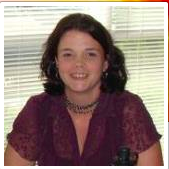
WANA Facebook Maven Lisa-Hall Wilson
Kristen here! Thanks, Lisa for the post, but I’d like make two important points here to close out Lisa’s article. First, there is A LOT to this job that involves doing stuff we don’t like. Successful people suck it up and do what it takes to succeed. If our goal is to write full-time and be paid to do what we LOVE, we’re going to have to make the tough choices.
I don’t like doing taxes, which you will DO A LOT OF once you start selling books. But, since I don’t want to write from federal prison where I am doing time for tax evasion? I do the taxes. I hate taxes, but hate prison MORE.
Just know that Facebook is NOT that hard. A little goes a LONG way.
The second point I’ll make is often we don’t “like” a thing or “enjoy” a platform because we don’t understand it. I was the same with Twitter AND Facebook.
Me: Facebook’s a witch!!!! Burn it!
Lisa: Why do you think Facebook’s a witch?
Me: Because it looks like one! Shiny buttons? “Friends”? “Boost post?” BURNNNNN IT!
Facebook: Um, THE PROGRAMMERS put these buttons on me. I can’t help it. I’m not a witch.
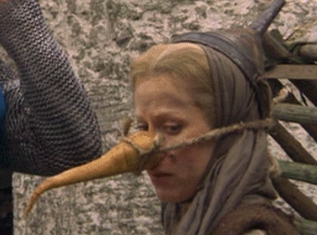
I can’t help they keep changing my layout.
Me: Burn it ANYWAY! Toss it in a pond and see if it floats!
Lisa: Kristen, calm down. Facebook isn’t a witch and you might want to cut back on the Monty Python.
And I am not saying y’all must participate on Facebook, but I AM saying there isn’t a single job in the world that only requires us to do all the glittery stuff we love. We need to do the cost-benefit analysis. If ten-twenty minutes a day on Facebook could increase your fan base and build relationships that translated into book sales, could you get past your distaste?
Consider that you might not like Facebook simply because you don’t understand it. I know Lisa changed my entire outlook on Facebook once I understood what my main goals needed to be…and all the buttons I could happily ignore.
Thank you, Lisa for another great post!
And I love hearing your comments! Comments on guest posts get double points.
To prove it and show my love, for the month of September, everyone who leaves a comment I will put your name in a hat. If you comment and link back to my blog on your blog, you get your name in the hat twice. What do you win? The unvarnished truth from yours truly. I will pick a winner once a month and it will be a critique of the first 20 pages of your novel, or your query letter, or your synopsis (5 pages or less).
Announcements:
As y’all know, WANACon is coming soon. I’ve recruited the BEST of the BEST. Learn from the likes of Les Edgerton, NYTBSA Allison Brennan, Best-Selling Author Candace Havens, Award-Winning Author David Corbett and more. Twenty-seven sessions to help you grow in craft and social media from home and recordings are provided for free, which is essentially $5.50 a class. Check out the line-upHERE.
My Antagonist class is in days (Sept. 20th) and this one is a early class, which is ideal for those who need a daytime class or for any of our overseas peeps.
I’m also offering an evening version on October 16th. These classes starts at a basic level $49 (webinar, recording and detailed notes) and go up to $249 (on the phone/in the digital classroom helping you plot a series or trilogy). Use WANA15 to get 15% off.


September 17, 2013
How Sick is Your Novel—Can It Be Saved?

Image via Flikr Creative Commons, courtesy of Army Medicine
Many writers struggle. We hate our beginnings, revisions are a nightmare and endings can fizzle. We work, rework, cry, try again and still don’t nail it. The second act sags and we start wondering if maybe we should reconsider learning medical billing instead of writing. Yet, I do have good news. I’ve never worked with a dying patient manuscript that couldn’t be saved.
Granted, we might have to do massive reconstructive surgery, but I have yet to have a patient die on the table  .
.
I’ve been blessed enough to help countless writers see the story they were trying to tell all along….just couldn’t seem to execute. Often this is a perceptual problem.
We can be too close to our own work.
Also, remember, high school and college English classes aren’t preparation for understanding HOW to create a work spanning 60,000-110,00 words. I might be going out on a limb here, but MFA students aside, I doubt’ y’all ever wrote a paper longer than 50 pages (more like 20). So stop beating yourself up. You might just need a little training and surgical residency.
Let’s look at some reasons for the most common maladies that can kill novels.
Weak, Flawed or Unclear Story Problem
When we have a weak, confusing or flawed story, there’s no way to know where to begin or even end. Why? We don’t know where we’re going. There is a difference between a clever idea and a defined problem in need of solving.
A recent BBT Advanced student brought me book she’s been working on since the 90s. Why didn’t it work? She had a clever idea, not a strong plot problem (the heart was weak…ok not there).
The problem wasn’t big enough and worse, the story problem made the protagonist unsympathetic. The protagonist was part of a matriarchal society who essentially used men for the purposes of propagation only. The laws had been set that if a woman didn’t birth a female child by a certain age, then she’d lose everything and be banished.
Interesting premise, but then I spotted the problem…
The writer’s goal for the book was for the protagonist to have the law changed and extend the time she had to birth a child because she hadn’t found the “right guy” and didn’t want to be exiled.
Yet, my first comment after hearing her story idea was, “Um, but you’re essentially wanting us to sympathize with a reluctant sex-trafficking slave-owner whose biggest goal is to modify an inhumane law so she has more time to get preggo. And what is the Big Boss Battle? C-Span? She changes a law? Doesn’t seem terribly exciting.”
*Cues Schoolhouse Rock’s I’m Just a Bill*
Her answer? Wow, um didn’t see that.
Without this observation, the writer could have revised into 2020 and still not have a workable story, because the core was flawed (though pretty simple to repair). She was fixing ingrown toenails when the beating heart of the story was dead.
But, with these critical pieces of information, we could go back to the drawing board surgical table and make her character into a hero. Yes, the protagonist is born into this matriarchal society that uses men like human cattle, but WHY are they doing it? What started it? What are the consequences for a society like this? What happens if protag fails?
HOW do we make the protagonist into a person who dismantles the evil system and brings freedom and restores love?
By the end of our talk, the writer still had all the essential pieces of the story, but they’d been strengthened and put into proper order. Now she has the template for a three-book work that is heroic and that addresses problems as old as humans—freedom and love.
Strong beating heart.
More Problems
There are other problems that can create MAJOR pits of WIP death.
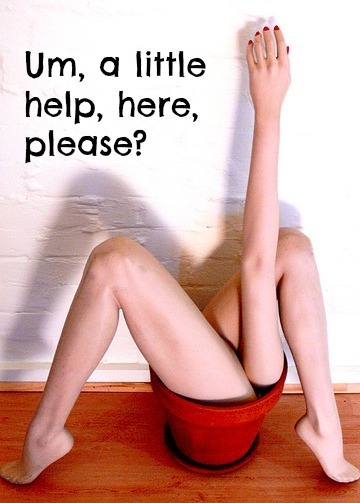
Image via Flikr Creative Commons, courtesy of Sally Jean
Story SiameseTwins
We may be trying to make one book do too much (and it needs to be more than one book).
Story Anemia
Our story might be confusing or the premise too weak to support something novel-length.
Story Disfigurement
Events might be in the wrong order. How effective could we be with our legs growing out of our head? Same with stories.
These maladies can make revisions a living nightmare. How can we know what and where to cut? It’s like performing surgery with no diagnostic tools. We’re just opening the body and hoping we don’t cut out the wrong parts while leaving in the diseased ones.
Story Surgery
This is one of the reasons I run my Antagonist Class. One is coming up in three days (Sept. 20th) and this one is a early class, which is ideal for those who need a daytime class or for any of our overseas peeps.
I’m also offering an evening version on October 16th. These classes starts at a basic level $49 (webinar, recording and detailed notes) and go up to $249 (on the phone/in the digital classroom helping you plot a series or trilogy). Use WANA15 to get 15% off.
The extra levels are optional, of course, but it gives you time working with me, one-on-one to help build or repair your story problem and plot. Sometimes another set of (trained) eyes can really help. The added benefit is that once you’ve been through the process, you will have the skills to fix other unfinished works or start new ones the proper way.
Feel free to read craft books (which I recommend), but even if we only read four craft books, that’s almost 50 hours of reading time, instead of 2-4 hours with me talking specifically about your story and FIXING it.
With the skeleton created, the “Boys in the Basement” have something to work with and can come up with twists and turns, themes and subplots that only the subconscious can create.
Another Option
As y’all know, WANACon is coming soon. I’ve recruited the BEST of the BEST. Learn from the likes of Les Edgerton, NYTBSA Allison Brennan, Best-Selling Author Candace Havens, Award-Winning Author David Corbett and more. Twenty-seven sessions to help you grow in craft and social media from home and recordings are provided for free, which is essentially $5.50 a class. Check out the line-up HERE.
How to Triage Your Novel
I just work hard to give you guys as many cost-efficient tools as possible to make you the best writer you can be. To check the health of your story:
Ask:
What is the CORE problem that will be solved in Act Three?
Can I state what my book is about in one sentence?
Does my book relate to larger human issues?
Is my protagonist sympathetic? Can we at least empathize?
What are the stakes? What happens if my protagonist FAILS? What will be the consequences not only for the protagonist, but the larger world around him/her?
How does my character change due to the plot problem? I.e. Slave-owner who mildly questions the ethics of her society to freedom fighter.
Am I generating drama or melodrama in each scene?
Some references to help you, Hooked (Les Edgerton), Scene and Structure (Jack Bickham), The Art of Character (David Corbett), The Writer’s Journey (Christopher Vogler), Save the Cat (Blake Snyder), Plot and Structure (James Scott Bell), Story Engineering (Larry Brooks), Three Uses of the Knife: On the Nature & Purpose of Drama (David Mamet), Writing Screenplays that Sell (Michael Hague).
***NOTE: Two of these masters (Les Edgerton and David Corbett) will be presenting at WANACon.
Do you have a WIP on life-support? Have you ever resurrected a WIP from the dead? What did you do? What suggestions do you have?
I LOVE hearing from you!
To prove it and show my love, for the month of September, everyone who leaves a comment I will put your name in a hat. If you comment and link back to my blog on your blog, you get your name in the hat twice. What do you win? The unvarnished truth from yours truly. I will pick a winner once a month and it will be a critique of the first 20 pages of your novel, or your query letter, or your synopsis (5 pages or less).
My new social media book, Rise of the Machines–Human Authors in a Digital World is NOW AVAILABLE. Only $6.99.


September 16, 2013
How Many Licks, um Books, Does It Take to Get to the Top of the Best-Seller List?
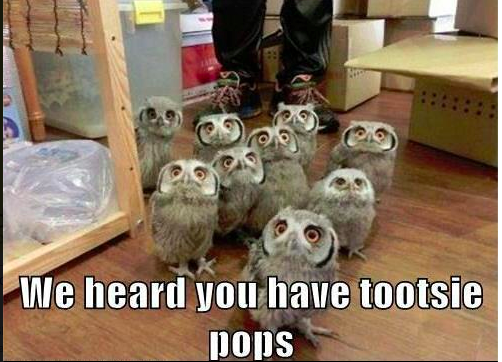
Image courtesy of The Dork Side
Most of us, especially when we’re new, want our first short story to be a major contest winner or our first novel to be a runaway success. That’s natural. Of course, this is not reality for us mere mortals.
Just like most of us never picked up a violin and magically busted out a flawless rendition of Flight of the Bumblebee, most of us won’t sit down and write a work that hits the New York Times best-seller list the first go round (or that sells a bazillion copies on Amazon, if you’re an indie).
Yeah, I was bummed, too.
Writing, like most other things, follows the Law of 10,000 Hours (Read Malcolm Gladwell’s Outliers for more). 10,000 hours of dedicated practice/work/study/training seems to be the magic number that separates the successful professional from everyone else.
Whether it is gymnastics, ballet, playing the ukelele, or writing, practice is key if we want to become masters of our pursuit.
*shock face* :O
This is why we need to write as often as possible, and it’s HUGE reason I am a proponent of writers learning to blog. Blogging can help accelerate the path to mastery, and has an added benefit of helping build a lasting author platform that can help drive sales.
History demonstrates time and again that it takes roughly 10,000 hours (or a million words, depending on who we listen to) to reach the status of true artist and masters of our craft.
Additionally, most authors write at least three books before they start seeing success, which is part of why successful novelists like Bob Mayer, Joe Konrath, and John Locke are constantly telling writers to do less tweeting and more writing. They’re correct. Write, write, write. Great to have a social platform, but we need books to sell or the platform is merely a monument to our Facebook skills.
Guess how long it takes to write three novels?
About 10,000 hours.
Three books minimum.
Thus, all you indie/self-pub authors who put your first book up for sale and you haven’t sold enough copies to buy tacos? Keep writing. 10,000 hours. 3 books. Traditional authors? Three books. Rare is the exception.
The more we write, the better we get (ideally). If the first novel is “eh” keep writing. To paraphrase some Monty Python:
I wrote a book! …and it sank into the swamp.
So, I wrote another book! It, too, sank into the swamp.
So, I wrote another book! …. And it caught fire, fell over…and sank into the swamp.
But the fourth book, THE FOURTH BOOK STOOD.
Happy writing! And follow The Dork Side on Facebook if you want to laugh regularly.
What are your thoughts? Do you agree? Disagree? How much practice do you do daily? How much did you write before you started actually thinking your writing was any good…and other people didn’t run away bleeding from the ears?
I LOVE hearing from you!
To prove it and show my love, for the month of September, everyone who leaves a comment I will put your name in a hat. If you comment and link back to my blog on your blog, you get your name in the hat twice. What do you win? The unvarnished truth from yours truly. I will pick a winner once a month and it will be a critique of the first 20 pages of your novel, or your query letter, or your synopsis (5 pages or less).
ANNOUNCEMENT: My Antagonist Class is in four days. Use the WANA15 code for 15% off when you sign up. Packages range from $49-$249. Need help with your book? Stuck? Getting rejected? Want a plan for NaNoWriMo? Have a drawer full of half-finished books you have no idea how to fix? An idea for a story you can’t figure out how to plot. A plot you can’t repair no matter how many revisions? Struggling with a series?
I can help  . And the cool thing, is once you’ve been through my process, you can plot and fix any book
. And the cool thing, is once you’ve been through my process, you can plot and fix any book  .
.
My new social media book, Rise of the Machines–Human Authors in a Digital World is NOW AVAILABLE. Only $6.99.
WANACon, the writing conference of the future is COMING! We start with PajamaCon the evening of October 3rd and then October 4th and 5th we have some of the biggest names in publishing coming RIGHT TO YOU–including the LEGEND Les Edgerton.
Get PajamaCon and BOTH DAYS OF THE CONFERENCE for $149 and all recordings for anything you miss or need to hear again. Sign up today, because seats are limited. REGISTER HERE.


September 13, 2013
Get What You Want Part 2—The Power of TNT

Original image via Wikimedia Commons.
Back when I was in sales, we had a saying, Fail to plan and plan to fail. I have a lot of people ask how I manage to get so much done, and much of it boils down to planning and TNT. We can’t use TNT if we don’t plan.
What is TNT?
Aside from the explosive stuff Wile E. Coyote employed in his many unsuccessful attempts to snag a roadrunner, TNT is Today NOT Tomorrow (a great acronym I learned in Peg Pickering’s book, The Art of Getting It Done).
The world will never reward us for what we intended to do.
In Part One, we explored the notion of being busy versus fruitful. I also shared a neat, yet scary bit of math. We can miss out on a lot of great stuff because of five minutes wasted. Just wasting 5 minutes, 12 times a day adds up to over 340 hours in a year (over TWO WEEKS or 31.6 eight-hour work days).
Why Plan?
Planning helps us maintain focus. I can tell when I have failed to plan and make lists. For instance, I had a WAY off day yesterday. Many of you might have noticed this because it’s the first time I have failed to post a blog in four years. Anyway, I went the store (no list) and forgot the three main things I went for, yet managed to buy $100 worth of stuff. Yes, I needed the “stuff” but I REALLY needed new dishwashing gloves, dog food and envelopes.
Also, since I didn’t make a list, I forgot to bring the two things I needed to MAIL (ergo why I needed envelopes), which would have been simple to mail since the post office was on the way HOME.
Now, I have to go BACK to the store to get the envelopes and go to the post office. This is easily 45 minutes I blew because I didn’t take FIVE minutes to make a list.
Planning can feel very counterintuitive. We feel like we are wasting time sitting down and making lists and agendas. Yet, a little bit of preparation can give a major return on investment.
Your Time is Valuable: How Are You Spending It?
Time-effectiveness studies conducted by DuPont demonstrated that, for every one minute spent planning, the time required to complete an activity is reduced by 3-4 minutes. Spend 10 minutes, reduce completion time by 30-40 minutes. Spend an hour, reduce by 3-4 HOURS….When properly used, 15 minutes of planning can effectively control your time for an entire day (The Art of Getting it Done, pg 64).
Planning Prepares TNT
Ever had a day where you know you did a lot, yet you were miserable because you felt like nothing was truly accomplished? Humans tend to take the path of least resistance. We will fold laundry or tidy the fruit bowl instead of tackling the hard stuff, the stuff that scares us.
The ugly stuff usually:
Involves doing something out of our comfort zone.
Doing something out of our natural skill set.
Tackling something overwhelming in size.
Yet, the ugly stuff is also what gives us the best returns. These are what Brian Tracey calls FROGS, and they must be eaten FIRST. Unless you’re from the bayous of Louisiana, the idea of eating a frog makes us cringe…so we put it off….and off…and we will do it Monday or start next month.

BITE ME!
Uneaten Frogs Cause Depression, Anxiety and Procrastination
Whenever I start feeling “depressed” I stop myself. Am I really “depressed’ or am I overwhelmed? What frogs are bouncing around out there that need to be eaten? What is scaring me? Uneaten frogs hop around in our heads and distract us. They keep us from sleeping well.
My FROGS this week? Final planning for WANACon, taxes (UGH), finalizing a paper version of Rise of the Machines–Human Authors in a Digital World.
I am a relatively new entrepreneur. WANACon is a revolutionary conference that brings all the best of a writing conference to YOUR HOME for a fraction of the cost (only $119 if you sign up before the 15th). Real, live interaction with top-tier professionals, NYTBSAs, editors, Amazon, etc.
But we have to train speakers to use the technology, recruit shepherds/moderators, and create forms to systematize our processes (NOT my area of strength).
I am new to self-publishing (part of why I recruited Amazon to present at WANACon). I’m slow because I don’t understand as much as I need to. I’m used to being fast, confident and in control. Now? I feel like a moron (but I’m learning).
Taxes scare me. I once had a panic attack on the phone with a lady from the IRS who practically had to talk me off a ledge, and they owed ME money.
Frogs Require TNT
When we plan, we need to be honest. Write down the BIG stuff, the stuff that scares you. Then employ TNT, Today Not Tomorrow. Some frogs are bigger, grosser and uglier and maybe they can’t all be eaten in one day. Break it up, then blast each part with TNT.
As an example, I was injured in college and couldn’t work for a time. I had to use credit cards to live. Debt piled up. How did I eat THAT Frog of Debt? I listed all the credit cards and payed the minimums on all except the smallest. I focused all my efforts paying off the card with the lowest amount. I worked from smallest to largest, eventually paying them all off.
Did the same with the medical bills. No, I couldn’t pay off the $3,500 ER bill, but I could pay $30 towards it. I could then pay OFF the $68 x-ray tech fee and work my way up until even the big stuff was eaten.
Why smallest to largest? Because we need to feel accomplishment or we get discouraged. Small victories add up, and give us energy and confidence. Make planning and TNT-Frog-Eating a habit? You’ll be shocked how much you will get accomplished.
What are your thoughts? Are you discouraged? Overwhelmed? Have you struggled and found a system that helped you slay your frogs?
I love hearing from you!
Since it was such a HUGE success and attendees loved it, I am rerunning the Your First Five Pages class SATURDAY EDITION TOMORROW. Use the WANA15 code for 15% off. Yes, editors REALLY can tell everything they need to know about your book in five pages or less. Here’s a peek into what we see and how to fix it. Not only will this information repair your first pages, it can help you understand deeper flaws in the rest of your manuscript.
My new social media book, Rise of the Machines–Human Authors in a Digital World is NOW AVAILABLE. Only $6.99.
WANACon, the writing conference of the future is COMING! We start with PajamaCon the evening of October 3rd and then October 4th and 5th we have some of the biggest names in publishing coming RIGHT TO YOU–including the LEGEND Les Edgerton.
If you REGISTER NOW, you get PajamaCon and BOTH DAYS OF THE CONFERENCE (and all recordings) for $119 (regularly $149). Sign up today, because this special won’t last and seats are limited. REGISTER HERE.


September 11, 2013
In Stonycreek the Flowers Blow—Honoring Those Lost on 9-11

Image via Flikr Creative CommonsJ. Todd Poling
Today is always a hard day for me, as I’m sure it is for many others who suffered far worse. Every year, I have nightmares, can’t sleep and spend most of every September 11th crying if I stop long enough to think. At first, I wasn’t going to blog, but then I thought back to one of my favorite poems, In Flander’s Fields. Canadian physician and Lieutenant Colonel John McCrae wrote the poem after presiding over the funeral of a friend lost in WWI in The Second Battle of Ypres.
I loved the poem so much, I committed it to memory. I was eight years old.
This morning, I couldn’t get the verses out of my head, thus please forgive me. I took some creative liberty with the original poem in hopes of honoring those lost on 9-11. I’m no poet, but maybe this can be a little bit of beauty to help us always remember those so senselessly taken.
In Stonycreek, the flowers blow
as airplanes taxi row on row.
They mark our place; and in the sky
The birds, still singing, bravely fly
Scarce heard amidst the tears below.
We are the Dead; twelve years ago
We loved, and laughed and didn’t know
Evil could rain from up above
And tear us from the ones we loved.
Two towers lost; the Pentagon.
A burning field.
Remember us; let children grow
To honor those who fought the foe.
The light be yours to keep it bright
Remember those who chose to fight
If you forget, we shall not rest
Though flowers blow…
In Stonycreek.


September 10, 2013
5 Misconceptions About Your Story’s “Normal World”
by K.M. Weiland (@KMWeiland)
Yes, today I have a guest post. KM and I go way back. We did prison time together. By the way glue-guns CAN get you in legal trouble and our lawyers have advised we not say anything more. But, she knows her stuff about story structure, and that’s an area many of us struggle with…along with a compulsion to use a glue-gun, glitter and pipe-cleaners to “spruce up” the IRS satellite offices. Okay, shutting up now.
Take it away!
*****
Writers sometime balk at the idea of beginning a story with the character’s “normal world.” Isn’t that kind of starting before the story? Won’t readers be bored if they have to wade through all that normalcy before the character’s adventure really starts? How in tarnation are we supposed to be able to open with a hook if we also have to show the character in his workaday life?
These are all legitimate concerns. In structuring a book’s beginning (which I discuss, in much more depth, in my book Structuring Your Novel: Essential Keys to Writing an Outstanding Story), the entire first quarter of the book will be focused on setup—or, in other words, establishing that normal world.
At first glance, you might think that seems like an insanely long length of time, and you’d be right. But . . . you’d also be wrong. Let’s take a closer look at some of the misconceptions surrounding the notion of the “normal world” at the beginning of a book.
Misconception #1: The normal world is boring.
Honestly, that one’s up to you. But with a little imagination, there is absolutely no reason your story’s normal world can’t be enthralling in its own right. Just because we call it the normal world, by way of contrast with what follows, doesn’t mean it has to be ordinary at all.
Your character’s normal world could be a cutthroat stock trading floor as in Ridley Scott’s A Good Year, a hilariously neurotic morning routine as in Frank Oz’s What About Bob?, or an action-packed exotic land as in Mike Newell’s Prince of Persia.
Misconception #2: The normal world forces the story to open too early.
What’s with this nonsense about using a full quarter of the story to set up the characters, settings, and stakes? What self-respecting reader is going to hang with you that long in order to reach that first game-changing plot point at the first quarter mark? If you do it right, every reader is going to hang with you.
Taking this time to appropriately set up your story is vital if readers are going to understand the conflict and invest themselves in your characters.
Consider how Steven Spielberg’s Jurassic Park uses its comparatively leisurely first quarter to introduce its characters, show their normal world, and guide readers to an understanding of their goals and what they have at stake. Had the movie opened with the first dinosaur attack—or even with the characters’ arriving at the park—readers wouldn’t have been properly prepared. They would have been missing out on the answer to the all-important “why should I care?” question.
Misconception #3: The normal world isn’t important.
The normal world is crucial for several important reasons. As we mentioned above, the biggest reason is simply giving readers enough time to care about your characters before you plunge them into the heart of the conflict. More than that, by the time the action heats up, you’re just plain not going to have time to explain important story elements.
Ridley Scott opens Gladiator with a gripping battle (hardly boring!) in order to show his soldier protagonist’s normal world, then slows down to discuss other important details, such as the state of Rome and the protagonist’s relationships with other key characters.
Misconception #4: The normal world has to do only with setting.
The word “world” tends to throw us a little bit. It can make us think the term is referring solely to setting. As a result, we might end up believing our protagonist’s normal world has to be his home, his bedroom, or maybe his business place. But these settings may have no role in the main story. So how does that work?
The truth is this: your character’s normal world is about way more than just setting. When you introduce his normal world, what you’re really doing is introducing key facets of his personality and, most importantly, the internal conflict he will be fighting throughout the story.
Charlotte Brontë opens her classic Jane Eyre by showing Jane’s normal world as an unloved orphan in her aunt’s home. But she also takes the opportunity to show us important aspects of Jane’s personality and, particularly, her inner struggle between her need for love and her need for freedom. That struggle will frame the entirety of the plot to come.
Misconception #5: The normal world precludes an action-oriented hook.
Once again, that emphasis on normal may make us think we have to open our stories in ho-hum, everyday mode. The character gets up in the morning, brushes his teeth, walks to work. Yawn. Where’s the hook in that? But, as we’ve already seen from some of the previously mentioned stories, some characters’ normal worlds are anything but boring.
But what if they are?
What if your character isn’t a warrior or an archeologist, but just a construction worker? Sometimes we can work a little trickery to get around this. Sometimes we can open our stories with an action hook that is really just an intro, in its own right, to the character’s normal world.
Guillermo del Toro’s Pacific Rim opens with an action scene that sets up his main character’s normal world as a washed-up pilot who is haunted by past tragedies. It works both because the opening sequence sets up character and setting, on its own merits, and because it leads into where the protagonist needs to be for the story proper to begin.
If we set it up correctly, our story’s normal world can provide one of our most useful and enjoyable opportunities to explore and develop our characters. This segment can—and should—be just as gripping as everything to follow, even as it lays the groundwork for more exciting scenes.
K.M. Weiland is the author of the epic fantasy Dreamlander, the historical western A Man Called Outlaw and the medieval epic Behold the Dawn. She enjoys mentoring other authors through her website Helping Writers Become Authors, her books Outlining Your Novel and Structuring Your Novel, and her instructional CD Conquering Writer’s Block and Summoning Inspiration. She makes her home in western Nebraska.
You guys have any questions? Comments? Other ideas of how to decorate the TSA scanners for Halloween?
I love hearing from you!
ANNOUNCEMENTS:
Since it was such a HUGE success and attendees loved it, I am rerunning the Your First Five Pages class SATURDAY EDITION. IT IS THIS SATURDAY! Use the WANA15 code for 15% off. Yes, editors REALLY can tell everything they need to know about your book in five pages or less. Here’s a peek into what we see and how to fix it. Not only will this information repair your first pages, it can help you understand deeper flaws in the rest of your manuscript.
My new social media book, Rise of the Machines–Human Authors in a Digital World is NOW AVAILABLE. Only $6.99.
WANACon, the writing conference of the future is COMING! We start with PajamaCon the evening of October 3rd and then October 4th and 5th we have some of the biggest names in publishing coming RIGHT TO YOU–including the LEGEND Les Edgerton.
If you REGISTER NOW, you get PajamaCon and BOTH DAYS OF THE CONFERENCE (and all recordings) for $119 (regularly $149). Sign up today, because this special won’t last and seats are limited. REGISTER HERE.


September 9, 2013
Get What You Want, Part 1—Are We Being Busy or Fruitful?

Image via Flikr Creative Commons, courtesy of elaueverose.
We live in a society that feeds us a lot of lies. The biggest one is about TIME. Oh, if I only had more time, then I could (fill in the blank). The truth is we are all given the same amount of time—24 hours a day. Of course the next big lie that’s easy to believe (and I’ve been guilty) is Well, if I only work HARDER, that will get me where I want to be.
That’s crap.
More time doesn’t equal MORE AWESOME.
Thus, today we’re going to look at some of the lies and time-stealers and ways to be masters of time, not slaves to it. We need to be vigilant and proactive so we don’t fall into Hamster Wheel Management. We’re called to be fruitful NOT busy.

Original image via Dan Derritt Flikr Creative Commons
We Can’t Find Time, We Can Only SPEND Time
One of the most common phrases in the English language? “If I could only find the time…”
Okay, sorry to break the news but time isn’t hidden in the couch cushions like loose change, Cheerios and that remote control we haven’t seen in a month. We can’t find time. We’re given time. How we spend it’s our choice.
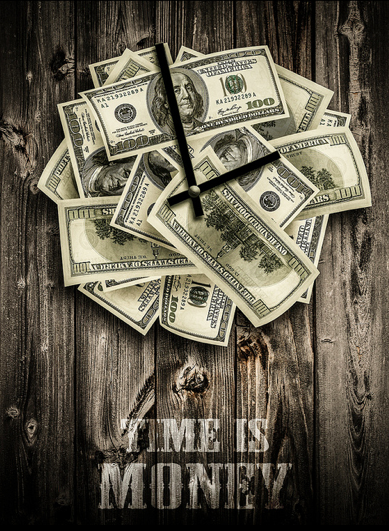
Via Flikr Creative commons, courtesy of Tax Credits.
Write a Clear Mission Statement of What We WANT
Feel free to have multiple mission statements: Faith/Spiritual, Family, Health, Finances, Work (Writing). For templates of how to do this, I recommend 7 Habits of Highly Effective People.
Mission statements are a lot like the log-lines for our novels. No log-line for a novel—ONE sentence that clearly states what our book is ABOUT? Easy to drift off down a bazillion rabbit-trails because every wild idea that pops in our brain seems worth giving a try. In the end, we’re more likely to end up with a mess than a masterpiece.
Same in life.
Without a clear picture of what we want, it’s impossible to spot the time-wasters versus the sound investments.
Make at Least TWO Lists
We’ve talked before about the Pareto Principle, also known as The 80/20 rule. Twenty percent of all our decisions will have 80% of the most return. This is a fairly universal rule. If you have employees, 20% will produce 80% of the output. If you run a volunteer organization, 20% will do 80% of the work.
Conversely, 20% of employees (customers, friends, volunteers, family members) can create 80% of our headaches. Limit time with psychic vampires and focus more on spending time with those who add value. Even being alone is better than leaking 80% of our time on stressful, counterproductive people/activities.
With the 80/20 Rule in mind…
List #1—The Boulders
The boulders are the BIG stuff. These are the actions that will make 80% of positive impact. Being a career author (need a finished novel). Becoming debt-free (need a budget). Possessing a healthy spirit, family, mind, and body (need boundaries and rest).
With a clear action plan, anything that gets in the way of these big goals can be easily spotted, rerouted or removed. No plan? We are reactive, wasteful and spend most of our time treading water.
No item on the BIG LIST can be done in one day, but we can write out steps that get us closer to that BIG goal every day. Remember, small actions over time add up. Those steps to our BIG GOAL are what we tackle FIRST.
Every day, I have a list of 2-6 BIG things that need doing, often stuff I dread. But the day isn’t complete until these items are knocked out (so many pages of research, writing so many words, writing a critical e-mail, creating a spreadsheet, etc).
In the meantime…
List #2—The Pebbles
The BIG LIST are boulders. They will take steady chipping away over time. Between time? Pebbles are easy. Too many people focus all their time on pebbles—which NEVER go away—at the expense of a few whacks on the boulder. Or they focus all on the boulder, then wear themselves out and become overwhelmed and discouraged because they’re buried in ignored pebbles.
Or they ignore/avoid the boulders AND the pebbles with useless activities that will never bear fruit.
Pebbles are small, worthwhile tasks that take less than 20 minutes to complete (most about 5).
Every day, when my main blog is finished, I call my mother and close friends. I believe in healthy relationships. But, while on the phone, I tackle a bucket of pebbles (stuff on my #2 List).
I sort laundry (5 minutes), empty the dishwasher (5 minutes), put a chicken in the crock pot for dinner (15 minutes), tidy the silverware drawer (5 minutes), sweep (5 minutes), or wipe down a counter or two (5 minutes), and have great company while I work.
If I have to pay a bill and they put me on hold? I read research, fill the cat bowl, or jot down ideas for blogs.
5 minutes a day reclaimed ADDS 30 hours a year
10 minutes a day reclaimed ADDS 60 hours a year
15 minutes a day reclaimed ADDS 90 hours a year
30 minutes a day reclaimed ADDS 120 hours a year
60 minutes a day reclaimed ADDS 340 hours a year
It’s easy to waste an hour a day 5 minutes at a time. Take those minutes back, and we can add 31.6 eight-hour workdays to our lives (Via The Art of Getting It DONE). And all this time we wondered where our vacation time went?  It’s leaking away unless we are proactive at plugging holes.
It’s leaking away unless we are proactive at plugging holes.
I’m not here to make you guys multi-tasking robots. I’m here to help you invest in the future you want.
Time with family, naps, relaxation, downtime, vacations and rest are essential for genuine success (the kind that doesn’t have us living off energy drinks, Xanax and screaming at the kids). If we’re conscious to be fruitful instead of busy, we’ll find we accomplish far more with less effort.
Focus increases confidence, offers a sense of authentic accomplishment and relieves anxiety. Focus will also free up time for more fun stuff (and more writing). Activity can be diffused like white light, or it can be a laser (which is MUCH of what I teach in my new book).
Do you feel eaten alive by your life? Is your To Do List a Frankenstein monster wrecking your life? Do you feel discouraged and overwhelmed? Have you learned to prioritize and set boundaries? What are some tips that have helped you regain control?
I love hearing from you!
ANNOUNCEMENTS:
Winner of 20 page edit. Troy Lambert. Please send your 5000 word Word Document to kristen at wana intl dot com.
Since it was such a HUGE success and attendees loved it, I am rerunning the Your First Five Pages class SATURDAY EDITION. Use the WANA15 code for 15% off. Yes, editors REALLY can tell everything they need to know about your book in five pages or less. Here’s a peek into what we see and how to fix it. Not only will this information repair your first pages, it can help you understand deeper flaws in the rest of your manuscript.
My new social media book, Rise of the Machines–Human Authors in a Digital World is NOW AVAILABLE. Only $6.99.
WANACon, the writing conference of the future is COMING! We start with PajamaCon the evening of October 3rd and then October 4th and 5th we have some of the biggest names in publishing coming RIGHT TO YOU–including the LEGEND Les Edgerton.
If you REGISTER NOW, you get PajamaCon and BOTH DAYS OF THE CONFERENCE (and all recordings) for $119 (regularly $149). Sign up today, because this special won’t last and seats are limited. REGISTER HERE.



